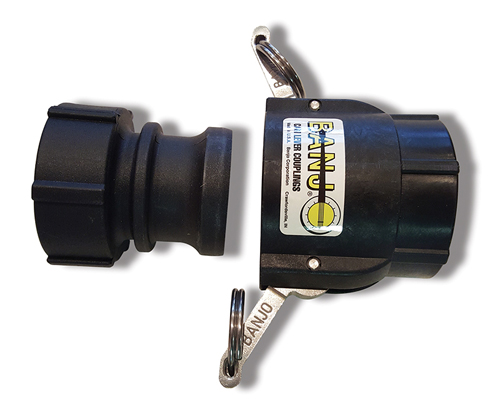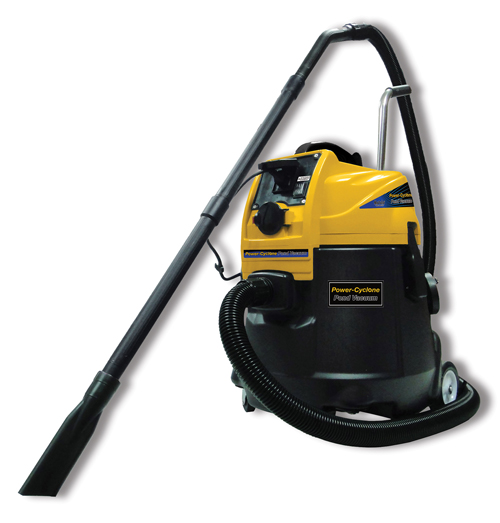
Installing and maintaining water gardens has really changed over the years. Just like almost everything else, technology and innovation have made our profession easier. Once a new piece of equipment is discovered, you start to wonder how you ever got along without it before.
I’m going to attempt to increase your awareness about the process of discovering important equipment, hopefully increasing the efficiency of your job. Some of these ideas are not necessarily new to the market, but they might be new to you.
This equipment can be organized into three distinct categories: equipment that every installer should have; equipment for maintaining a water garden; and equipment installed in the pond to make life easier for the water gardener.
Must-Haves for Installers
Knowing the elevation lines around a water garden is extremely important to ensure the water goes where it is supposed to. There are three basic pieces of equipment that measure elevation accurately: the transit, the rotary laser leveler and the Ziplevel.
The Ziplevel is a precision elevation measurement device that sets in just seconds. It’s truly a one-person operation. The first time an installer witnesses the use of a Ziplevel, it turns into an obsession. I had been very proud of my rotary laser leveler — and I still am — but after using a Ziplevel, the laser leveler seemed obsolete. Of course, you can still use a transit, which I did for years, but it takes two people to operate, and we all know the expense of labor. A rotary laser leveler is better if you have a one-person operation. The laser leveler takes some time to set up, because the tripod that the leveler is attached to needs to be absolutely level and stable. Both work well, but the Ziplevel does not need a tripod or line of sight. It can also be interfaced with a computer.Installing a water feature requires the removal of dirt and the installation of stone, which can be very heavy and almost impossible with just a wheelbarrow, so motorized equipment is preferable. Getting in tight spots around an existing landscape is an interesting challenge with most pieces of heavy equipment. In some situations, the landscape can be torn up rather easily, or the openings between buildings and other permanent structures can prevent access with most motorized equipment — except for the mini “walk-behind” skid steers. The larger variety of these have a rated operating capacity of around 1,000 pounds.

The Dingo made by Toro is one of the first on the market. These machines can do a lot of work in a short amount of time. They also can perform tasks in tight spots that would otherwise be extremely difficult with hand tools. They are expensive, but it is possible to rent one and try it out before you spend the money to purchase one.
Moving large stone, of course, requires heavy equipment. Lifting and placing a stone in precisely the right spot requires it to be cradled by either chains or straps. Using 4-inch-wide straps makes the job of handling a stone easier than using chains, but a new invention called a Boulder Buddy is a combination of choker straps that cradles stone securely. The Boulder Buddy goes on and comes off easily, as demonstrated in videos that can be found on the internet. I’m actually going to order a Boulder Buddy for myself! Over the years, I have usually used one or two 4-inch choker straps around the boulders, but I am looking forward to the apparent simplicity of the Boulder Buddy.
Mandatory Maintenance Tools

One of the first pieces of equipment that I recommend for reducing the amount of effort to maintain a water garden is a continuous, nonstop pond vacuum. This can save a lot of time in removing sediment, especially if a pond has a sediment pit in the bottom after installation. I define the sediment pit in the bottom of the pond as a 2- to 4-square-foot area that is 6 to 12 inches lower than the rest of the bottom of the pond. The majority of the sediment migrates to this area and can be occasionally vacuumed out. The pit should be devoid of any gravel or stone so that the sediment can be easily removed. If there is not a sediment pit, the vacuum can still be a very useful piece of gear.
Maintaining water gardens where the water temperatures are very cold can be miserable without a pair of shoulder gauntlets or waterproof gloves that extend to the shoulder. They allow a water gardener to work in deep, almost freezing water. Of course, rubber gloves that extend just beyond the wrist will work in shallower situations.
>> See More | View All of the Best Overall Design photos from Dean Pipito’s amazing installation
Knowing the exact volume of a water garden is critical when adding various treatments. Whether the treatment is for chlorine removal, algae control, a disease outbreak or the determination of the fish-to-volume ratio, calculating the exact volume is very important. Of course, you can take the dimensions of the pond and perform the calculations for volume, but such calculations are almost always not entirely accurate. This could be due to the irregular edge present in a lot of ponds, shelves that might have been installed or the amount of stone that has been added at one time or another.

You can also determine the volume by timing how long it takes to fill a known-volume container and then extrapolating that number from how long it takes to fill the pond. This is a more accurate method, and I have used it many times. However, putting a water meter in line with the hose that fills the pond will enhance accuracy and save time. These are inexpensive and very easy to use. For any installer, this is a time-saver, and your clients will appreciate knowing the exact volume of their ponds. Make sure that you provide this information to them in written form, as it can be easy to forget.
Adding fertilizer to an underwater plant is an interesting challenge for a lot of us. Of course, the fertilizer tabs have made this job easier, but, in a lot of situations, the tab will fall apart before it can be pushed to the root area of the plant. I have discovered that a balling gun used to administer medications to large animals works very well at getting the fertilizer tab down into the root zone of the plant. I also use a dibble to create a hole in the soil before the loaded balling gun is used. The roots and rhizomes of the plants may be very tight, so using the dibble first allows easy access for the balling gun tip to be pushed into the root zone.
Dividing some plants can be difficult when the root ball is so compact that even a knife will not cut through it. Using a reciprocating saw or Sawzall makes this job so much easier, creating short work of dividing root-bound plants.
Making sure that plants are labeled with the proper names and varieties is vital to be able to sell the plants and provide information about their growth habits. In the past, I used a black marker on a white label stuck into the soil, where it was barely visible. I soon found that the marker would fade where the label was exposed, and even under the soil, it would eventually fade anyway. I have since started using a Brother labeler with TZe tape. I print out the label and apply it to a white plastic label that I stick into the pot’s edge. These labels have lasted for at least eight years now without any indication that the printing will fade. Some labels may get pulled out for whatever reason, so in these cases, I always make sure to include an additional label in the same pot that is completely buried in the soil, just as insurance.
Water Gardening Made Easy
Installing quick couplers in place of unions where piping is coupled together is a little more expensive, but well worth the cost. Attempting to thread a union together in tight spots can be frustrating. The quick coupler makes this job much more enjoyable for the client.
Adding underwater jets in strategic locations in a pond will not only improve circulation in potential dead zones, but can also direct sediment to sediment pits or bottom drains. Sediment removal is so much easier if it’s all in one spot.
 There are a lot of land critters that can create problems for water gardeners. A piece of equipment that has solved many problems for me and my clients is the ScareCrow. It works on the principle of motion detection and then sprays water with a sprinkler head in the direction of the motion. It deters deer, great blue herons, dogs, cats, raccoons and similar critters from the surrounding area. It has a 120-degree arc of motion detection, and the sprayed water will easily cover the entire detection area. The instructions say that it will protect 1,200 square feet. The downside is that you must have a garden hose hooked up to it and charged at all times in order to deter critters. Of course, it would need to be shut off during times when people are around. I would recommend that a client have a ScareCrow available at all times, just in case an unwanted creature shows up.
There are a lot of land critters that can create problems for water gardeners. A piece of equipment that has solved many problems for me and my clients is the ScareCrow. It works on the principle of motion detection and then sprays water with a sprinkler head in the direction of the motion. It deters deer, great blue herons, dogs, cats, raccoons and similar critters from the surrounding area. It has a 120-degree arc of motion detection, and the sprayed water will easily cover the entire detection area. The instructions say that it will protect 1,200 square feet. The downside is that you must have a garden hose hooked up to it and charged at all times in order to deter critters. Of course, it would need to be shut off during times when people are around. I would recommend that a client have a ScareCrow available at all times, just in case an unwanted creature shows up.
These are tools I have found that have worked for me and have saved me a lot of time and headaches. If anyone has suggestions regarding other equipment that makes water gardening easier, please feel free to contact me.


